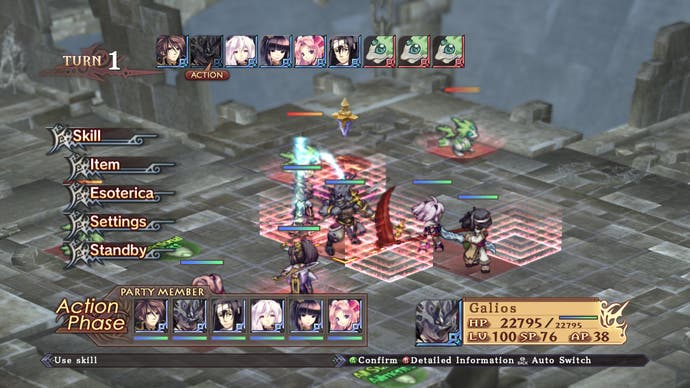Agarest: Generations of War Zero
Unnatural selection.
Agarest: Generations of War Zero is a game about heredity. In the first half of the game you play as Sieghart, a typical tousle-haired anime hero sort, as he fights monsters and decides which of his many female companions he'd like to romance. In the second half of the game, you play as their offspring, with abilities and stats determined by the parental choices you made earlier.
However, Agarest is also a cautionary tale about the perils of limited genetic diversity. Far from being a sturdy hybrid, able to survive a changing environment, it's an inbred throwback, too indebted to a shallow gene pool to truly impress.
Tactical role-playing is the genre, and it's an area that has hardly benefited from much cross-breeding in recent years. There have been occasional flurries of innovation, but otherwise it's a gameplay style that is still much the same as it was in the time of Tactics Ogre and Vandal Hearts.
There's nothing terribly wrong with adhering to genre standards, in theory, but it can also be a comfortable trap. So it proves for Agarest, a game which feels lazy and half-hearted, content that there are enough fans of its niche to see it through.
It's technically a prequel, but plays more like a slightly enhanced remake of the 2007 Japan release, Record of Agarest War. With multiple name changes across territories and fractured release dates across various formats, it's a series that has managed to disguise its lack of evolution in a fog of confusion, penetrated only by those already sympathetic to its pink-haired manga stylings.

Story scenes, of which there are many, play out in drab fashion. Still images of the characters prop up either side of the screen and bang on at each other about all manner of peripheral nonsense. Their faces are vaguely animated, and their chests pulse in a crude facsimile of breathing, but the effect is creepy at best. It's certainly not enough to draw you into Agarest's generic tale of ancient evils and heroic prophecy. Worse still, dialogue scenes can't be skipped - only accelerated. Even then, you'll sit through dozens of these stiff tableaux between battles.
Actual gameplay is similarly limited. You progress along a fixed path, forced to stop at each dot along the way for a battle. These often have no bearing on the plot and are simply there to make the journey from one chapter to the next take as long as possible.
At least there are some decent ideas in combat. Characters can team up for attacks if you position them in each other's hot spots. Each character has a different pattern of squares around them where such attacks can be triggered, and manoeuvring your squad into position for the best combat opportunities is a core part of the game's strategy.

